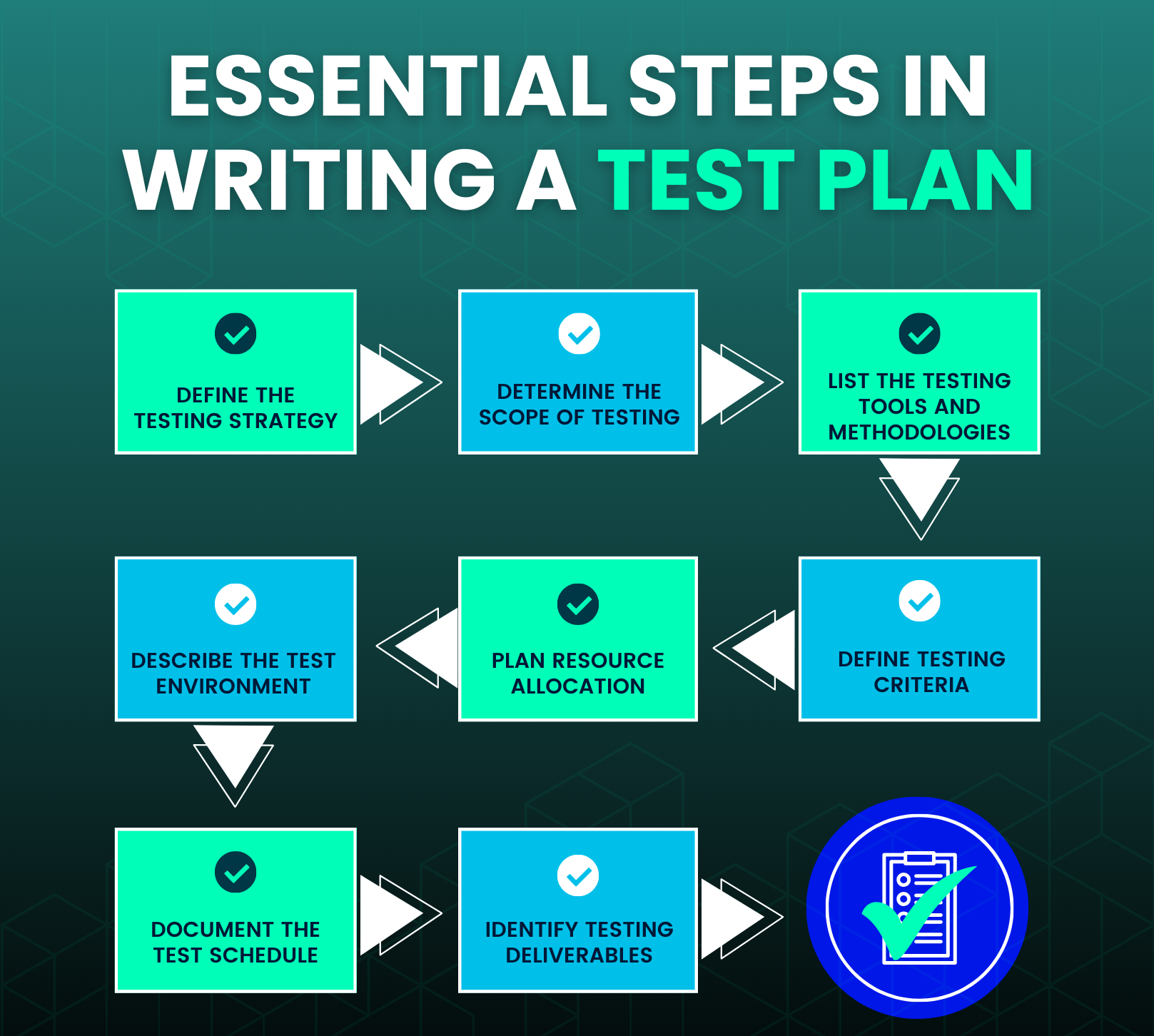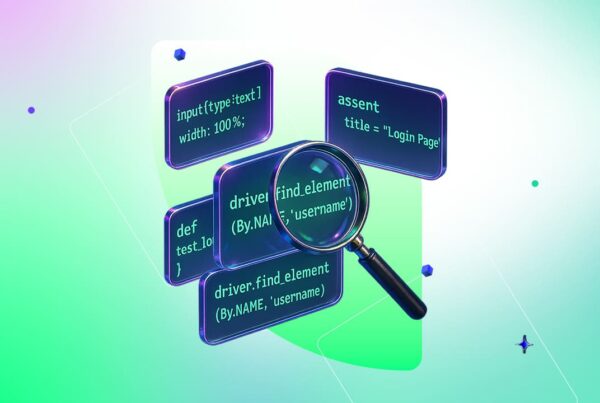How to Write Test Plan: A Step-by-step Guide

Software testing is an indispensable part of the development lifecycle. However, many challenges prevent effective testing, from incomplete requirements to resource constraints, test data management, test case design, and more. Writing and maintaining a comprehensive test plan is a great way to overcome these challenges, establish the right goals, and achieve them easily.
What is a Test Plan?
Test plan document lists all the critical aspects of software testing. From test objectives and strategies to schedules and deadlines. The test plan also offers insight into the tools and resources needed to complete the project on time and within budget. It acts as a blueprint for the test organization, ensuring the crucial testing task is carried out effectively.
Teams with a test plan document can gain deeper insight into user scenarios, start and end dates, and environment details. The plan identifies potential risks in the testing process and specifies the various exit parameters. With expected results documented well before testing activities begin, the test plan acts as a benchmark for comparing actual results. Using the test plan can help QA engineers minimize test execution times.
Why are Test Plans Important in Software Testing?
A well-planned, properly crafted, and comprehensively documented test plan is a great reference point for testing teams. Since it is updated as the testing project progresses, it provides all stakeholders a real-time view of the project. Using the test plan, teams can ensure all testing activities are coordinated and executed correctly and in accordance with the schedule. Test plans in software testing are extremely important as they:
- Provide insight into the testing process, including the tools, resources, and people needed to accomplish various tasks.
- Acts as a clear guide for stakeholders to carry out different activities while allowing them to stick to quality standards and delivery deadlines.
- Explain the scope of the testing project by documenting every crucial aspect and minimizing scope creep.
How to Write Software Test Plan?
A test plan is a detailed reference for testers across the testing lifecycle. Creating an effective test plan requires teams to consider several aspects.
Here are the essential steps to writing a test plan:

Define the testing strategy
Defining a detailed testing strategy is the first step in writing a test plan. This strategy must mention the project objectives and the tools and resources needed to achieve them. The strategy should also include the efforts to go into the testing process and associated costs.
Determine the scope of testing
If you want to drive the best testing outcomes, you must determine your project scope and testing scope. While project scope acts as a reference point throughout the project, testing scope helps outline test boundaries. Documenting the scope early in the process can help maximize test coverage while containing the challenge of scope creep.
List the testing tools and methodologies
Another critical aspect of writing a test plan is listing the tools and methodologies. This information will help team members have a clear idea of the project while allowing them to have all the skills in place to maximize tool value and ROI.
Define testing criteria
A successful test plan must also clearly depict the testing criteria. As you list all the software features to be tested, you must also finalize and document the standards or rules governing your testing process. For instance, you can define the benchmark for suspending tests if 50% of test cases have failed. You can also establish benchmarks that signify the successful completion of a test phase or project, allowing you to move on to the next stage.
Plan resource allocation
While the testing strategy only mentions the resources, this step requires planning the allocation in detail. A comprehensive breakdown of the different types of resources required for project completion is critical. This includes human effort, equipment, and all the infrastructure needed for accurate and comprehensive testing.
Describe the test environment
Describing the test environment is also a vital aspect of the test plan. This helps to provide insight into the nature of the test environment, along with its configuration and availability. In this step, make sure to document the details of the software, operating systems, test data, test devices, test scenarios, etc.
Document the test schedule
When testing any software or feature, having a timeline in place is very important. If you want to ascertain your test schedule, you must break down the project into smaller tasks and allocate the time and effort required for each. To do this successfully, you must factor in several variables, including team availability, number of working days, etc. You must also keep some cushion for unexpected delays caused by resource unavailability, changing scope, and extended testing schedules.
Identify testing deliverables
The last step of the test plan is identifying testing deliverables. This includes the documents, tools, and other equipment needed to support testing activities. Across various stages of the testing lifecycle, you must have documents ready on the test design, test scripts, test data, and simulators. You must also use these documents to update test results, integrate defect reports, and include release notes.
Transform your Testing Outcomes with Effective Test Plans
In a highly competitive and volatile business environment, test planning in software testing acts as the backbone of the entire project. Without an extensive and well-crafted plan, QA engineers can get confused. Undefined goals, poorly documented strategies, and a lack of information on deadlines can derail the entire software testing project. This can hinder software quality, hamper tester morale, and delay release cycles.
As QA engineers embrace different types of software testing and advance towards test automation, following a set of guidelines can help them build an efficient test plan that effectively tests code. Embrace these steps today to yield quick test results and drive efficiency across your testing teams.
You Might Also Like:
 Top 10 BDD Testing Tools
Top 10 BDD Testing Tools
Top 10 BDD Testing Tools
 10 Best Desktop Application Testing Tools
10 Best Desktop Application Testing Tools
10 Best Desktop Application Testing Tools
 Developer’s Handbook to Static Code Analysis & Practices
Developer’s Handbook to Static Code Analysis & Practices

































